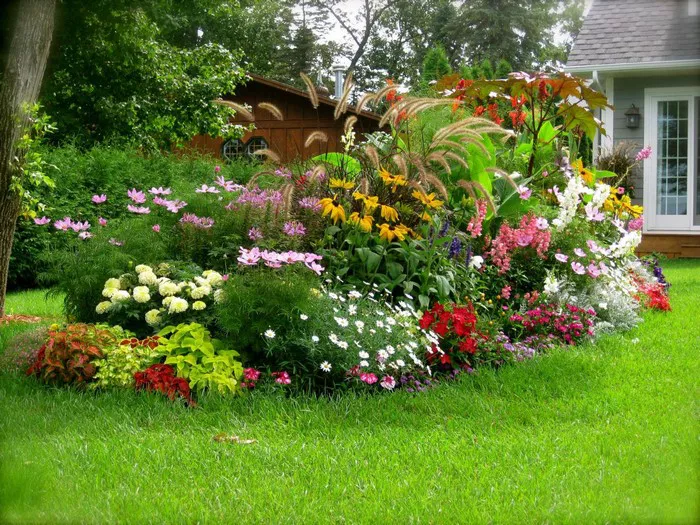Creating a vibrant and captivating flower bed can transform any outdoor space, adding beauty, color, and life to your garden. Whether you’re a seasoned gardener or just beginning your horticultural journey, knowing what you need for a successful flower bed is essential. From selecting the right location to choosing the perfect plants and providing proper care, each step plays a crucial role in fostering healthy growth and stunning blooms. In this comprehensive guide, we’ll delve into the key elements required to establish and maintain a flourishing flower bed that will be the envy of all who behold it.
1. Location, Location, Location
Before you start digging, it’s vital to carefully consider the location of your flower bed. Most flowering plants thrive in areas that receive ample sunlight, typically at least six hours of direct sunlight per day. Take note of the sunlight patterns in your yard throughout the day to determine the optimal placement for your flower bed.
Additionally, assess the soil quality in potential locations. Well-draining soil rich in organic matter is ideal for most flowering plants. Conduct a soil test to determine its pH level and nutrient content, as certain plants may have specific soil requirements. If necessary, amend the soil with compost, peat moss, or other organic materials to improve its structure and fertility.
2. Design and Layout
The design and layout of your flower bed play a significant role in its overall aesthetic appeal. Consider factors such as size, shape, and arrangement when planning your garden space. Whether you opt for a traditional rectangular bed, a circular island bed, or a meandering border, ensure that the design complements the existing landscape and architectural features of your home.
When selecting plants for your flower bed, think about their mature size, growth habits, and color palette. Aim for a harmonious blend of heights, textures, and colors to create visual interest and balance. Group plants with similar water and sunlight requirements together to simplify maintenance and ensure optimal growing conditions.
3. Choosing the Right Plants
Selecting the right plants is crucial for the success of your flower bed. Consider factors such as climate, soil conditions, and maintenance requirements when choosing which plants to include. Native plants are often well-adapted to local environmental conditions and tend to require less maintenance once established.
When designing your flower bed, incorporate a mix of annuals, perennials, bulbs, and shrubs to provide season-long interest. Annuals offer vibrant blooms for one growing season and are ideal for filling in gaps or adding splashes of color. Perennials return year after year, providing enduring beauty and structure to your garden. Bulbs, such as tulips and daffodils, add early spring color, while shrubs can anchor the bed and provide year-round structure.
4. Soil Preparation and Planting
Proper soil preparation is essential for the health and vitality of your flower bed. Begin by clearing the area of any weeds, rocks, or debris. Loosen the soil to a depth of at least 12 inches, breaking up clumps and incorporating organic matter such as compost or aged manure.
When planting, space the plants according to their mature size, taking into account their individual growth habits. Dig a hole slightly larger than the plant’s root ball and backfill with soil, gently firming it around the roots. Water thoroughly after planting to settle the soil and provide moisture to the roots.
5. Mulching and Watering
Mulching helps conserve moisture, suppress weeds, and regulate soil temperature, making it an essential step in flower bed maintenance. Apply a layer of organic mulch, such as shredded bark or compost, around the base of your plants, being careful not to mound it against the stems.
Proper watering is critical for the health and growth of your plants, particularly during the establishment phase. Water deeply and infrequently, allowing the soil to dry out slightly between waterings to encourage deep root growth. Use a soaker hose or drip irrigation system to deliver water directly to the root zone and minimize water waste.
6. Fertilizing and Pruning
Regular fertilization helps replenish nutrients in the soil and promote healthy growth and abundant blooms. Choose a balanced, slow-release fertilizer formulated for flowering plants and apply according to the manufacturer’s instructions. Avoid over-fertilizing, as excessive nitrogen can lead to lush foliage at the expense of flowers.
Pruning is an essential maintenance task that helps shape and rejuvenate your plants while removing dead or diseased growth. Remove spent flowers to encourage continuous blooming and deadhead perennials to prolong their flowering period. Additionally, prune shrubs to maintain their desired size and shape, removing any crossing or damaged branches.
7. Pest and Disease Management
Keeping pests and diseases at bay is essential for preserving the health and beauty of your flower bed. Monitor your plants regularly for signs of pest infestations or disease symptoms, such as yellowing leaves, distorted growth, or unusual spots.
Practice cultural controls, such as proper spacing, adequate air circulation, and good sanitation, to minimize the risk of pest and disease problems. If necessary, use organic or chemical pesticides judiciously, targeting specific pests while minimizing harm to beneficial insects and wildlife.
8. Maintenance and Care
Regular maintenance is key to keeping your flower bed looking its best throughout the growing season. Stay on top of tasks such as weeding, watering, and deadheading to ensure optimal growing conditions and maximum bloom production.
Monitor your plants for signs of stress or nutrient deficiencies, adjusting your care routine as needed to address any issues that arise. Stay proactive in managing pests and diseases, intervening early to prevent widespread damage or infestations.
Conclusion
By following these essential steps and providing the necessary care and attention, you can create a stunning flower bed that delights the senses and brings joy to your outdoor space for years to come. With careful planning, thoughtful plant selection, and proper maintenance, your garden will be a source of pride and beauty for all who behold it.


